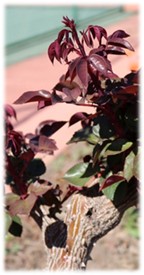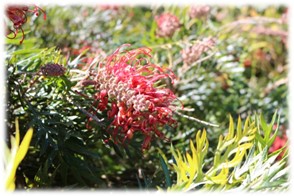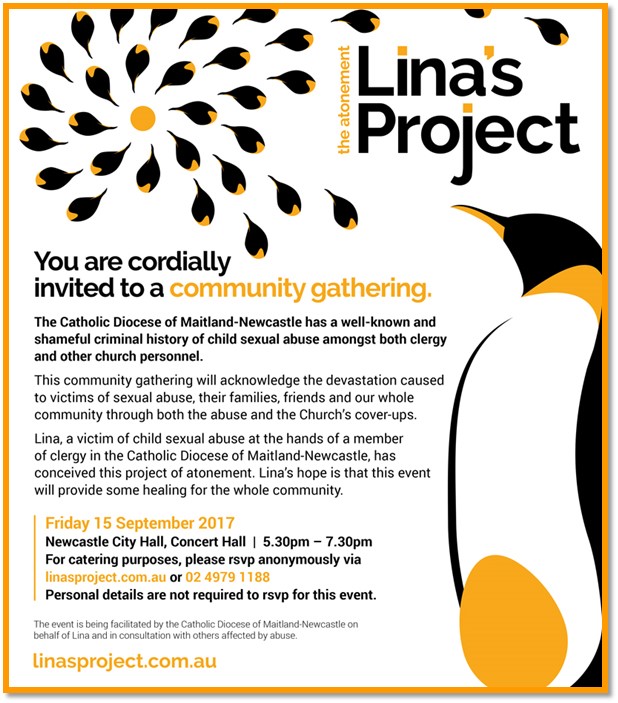
 New life springs forth and somehow we are all created anew. From death comes new life, from the cold comes warmth. I love looking at the new life on our roses and the potential for them to bud and bloom year after year. We prune them back and all we see for many weeks is what looks like dead wood and then, presto, the new shoots begin. I also love the sounds of the morning birds as they feed of the nectar of the trees that have begun to bloom. Our Australian native garden is a great attraction to the busy-ness of spring life.
New life springs forth and somehow we are all created anew. From death comes new life, from the cold comes warmth. I love looking at the new life on our roses and the potential for them to bud and bloom year after year. We prune them back and all we see for many weeks is what looks like dead wood and then, presto, the new shoots begin. I also love the sounds of the morning birds as they feed of the nectar of the trees that have begun to bloom. Our Australian native garden is a great attraction to the busy-ness of spring life.
This week is National Child Protection Week, with the theme ‘Play your Part’. We are all being invited to play our part to promote the safety and wellbeing of children and young people. It is definitely up to communities to keep children and young people safe and well. This week serves to remind us of playing our part.
Next Sunday, 10 September, we are being asked, in Catholic Churches around Australia, to acknowledge Child Protection Sunday. The National Committee for Professional Standards has produced a number of resources for parishes to use on this Sunday. The theme for Child Protection Sunday is ‘See Me, Hear Me’. The focus comes from the Royal Commission’s key element that when children participate in  decisions affecting them, and are taken seriously, an institution is better prepared to be ‘child safe’.
decisions affecting them, and are taken seriously, an institution is better prepared to be ‘child safe’.
One of the resources produced for this Sunday is a set of homily notes by Fr David Ranson. He quotes German Writer, Jürgen Moltmann, from “In the End – The Beginning”, 10.
Childhood and youth are . . . transfigured with the daybreak colours of the dawn of life…. imagined childlike innocence, this image of the pure beginning, this world of unlimited possibilities – all this makes childhood the image of hope . . . and when we search for ‘the child in us’ it is because we long to open this wellspring in ourselves once more.
David Ranson goes on to say:
In every child, God waits for us to stir again within us the sense of new beginnings, of fresh possibilities, of awakening hopes. In the wonder of children our concern gives way; in their excitement, our pressure is relieved; in their play, our compulsiveness is disarmed. Every child is the sign of life’s hope of ever new beginnings. They are the future in anticipation. Is it surprising that Emerson once observed, that each child is the eternal messiah who returns again and again among fallen men and women, to lead us into the kingdom of heaven?
Yet, sadly we know that the innocence of youth has not always been treasured and protected in our community. For nearly thirty years now we have been subjected to the constant exposure of the way in which, in certain circumstances, that innocence has been betrayed, and in many cases destroyed. The litany of complaints of the sexual abuse of children within our community has become a wound that has yet to discover its healing.
I hope you are aware of the event known as The Atonement: Lina’s Project which will be held at Newcastle City Hall on Friday 15 September from 5.30pm to 7.30pm.

Please, please come and stand in solidarity with those who have been harmed, because their wounds, suffering and grief are also ours.
Ranson goes on to say:
If we can truly learn, amongst other things: the lessons of what contributes to cultures of abuse and be honest about those efforts required to embark upon cultural change; if we can learn better those processes of transparent examination when incidents of abuse might occur; if we can truly hear the deepest needs of those who have been abused and better distinguish between the criminal, the legal and the pastoral; and if we can learn the kind of leadership that this moment genuinely requires - then what is a deep wound might indeed become a source of new life. The outcome of such learning will be growth in our identity as communities of reconciliation….. our life of reconciliation, begins with our readiness to be available to people where they are, to journey with them in whatever place of hurt and exclusion they may be experiencing. This kind of accompaniment is marked by a listening patience that allows the other to reveal that which is a burden, even when the person might not be articulate about what that burden is, and why it weighs so heavily.
He notes that hospitality is an essential part of this accompaniment. Hospitality carries with it a sense of both graciousness and spaciousness – an abundance that will act, in time, to invite a new way of thinking about possibilities. We are in the act of enabling communities of reconciliation, of forgiveness and possibly of healing.
Such communities are ‘communities of safety’ where people can explore their wounds and experience the safety to rebuild their trust in life. They are ‘communities of memory’ where memory can be retrieved in a redemptive way. And they are ‘communities of hope’ from which people can go forth empowered, commissioned to bring forth life in abundance.
I feel compelled to share with you David Ranson’s next paragraph in full, because I am really inviting you to come and stand as one, on this very important and significant night for all of us. In it he is quoting Simone Weil, “Attention and the Right Use of School Studies,” in Waiting for God (London: Routledge & Kegan Ltd, 1951).
Becoming such a community of reconciliation and Resurrection, as in Matthew’s framework, is not an instant project. It occurs in our commitment to see and to hear particularly those who are vulnerable, and those whose voice is too often overlooked. The Jewish mystic and feminist, Simone Weil, recounted in one of her insightful essays that in the first legend of the Holy Grail, it is said that the Grail belongs to the first comer who asks the guardian of the vessel, a king three quarters paralyzed by the most painful wound, “What are you going through?” Only when Parsifal has learnt how to ask this question is he ready to receive the Grail, that the king once paralyzed retrieves his health, and vitality is restored to the land. In Weil’s words, only when Parsifal has learnt how to attend to the other, not just as a unit in a collection, or a specimen from the social category labelled ‘unfortunate’ (or ‘as too small’ as in our case today) but as a person, only when he has learnt how to gaze upon the other full of attention, emptying himself of his own agenda to receive the truth of the person he is encountering, does true healing occur for the kingdom. The theme of our Child Protection Sunday calls us to this radical attitude of spirit. Simone Weil illustrates in her discussion that the capacity to give this kind attention to another is a very rare and difficult thing: it is almost a miracle; it is a miracle. And yet it is the key to healing. Weil thus presents us a metaphor for our own healing in the face of the experience of the wound at the heart of our life as Church. It is only as we learn to encounter persons, and especially our children, full of attentiveness, asking, beyond mere warmth of heart, impulsiveness and pity, “what are you going through?” that new horizons can possibly disclose themselves for it. The alternative is to be paralyzed with a kingdom in decay.
This invitation is open to everyone in our communities. All have been impacted and in standing as one who knows what may emerge – I am sure it has to be better than the paralysis to which Ranson refers.

Let us pray for Lina, Lina’s Project and for all affected by past abuses.